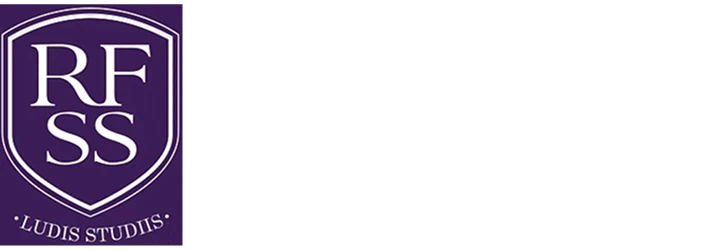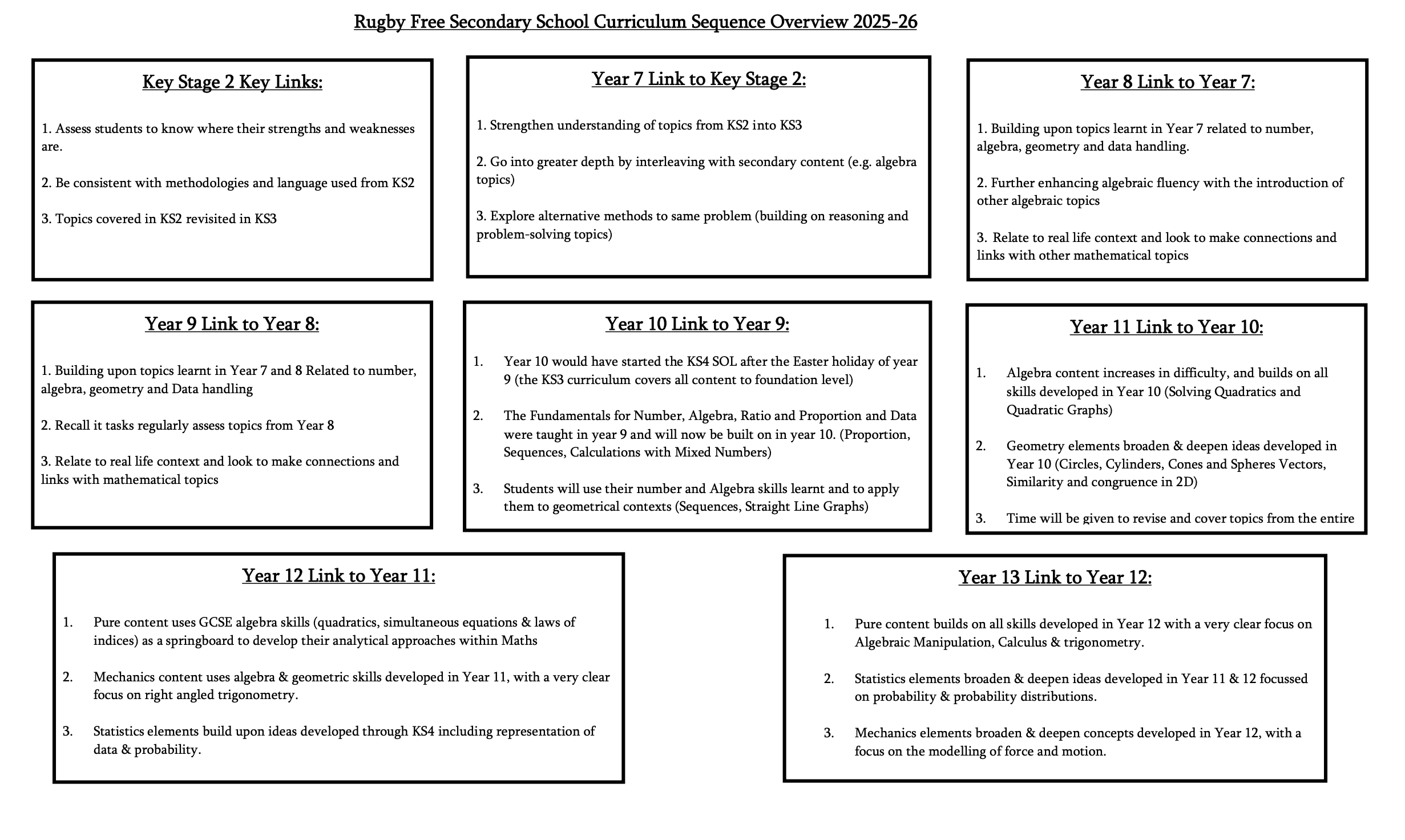Music Department – Overarching Curriculum Intent (2025/26)
RFSS Curriculum Vision Statement:
To cultivate a vibrant community of musicians who ignite their creative fire and confidently share their musical voices through exceptional performance.
Music Curriculum in Context:
Music Curriculum Intent: Performance and Creativity
Our music curriculum fosters a lifelong love of music through performance and creativity. We aim to empower students to become confident and expressive musicians, capable of sharing their musical voice with the world.
Curriculum Aims:
- Performance: We believe that all students can develop their performance skills, regardless of prior experience. Regular solo and ensemble performance opportunities will build confidence, stage presence, and musical communication skills.
- Creativity: We encourage students to explore their musical ideas, experiment with composition and improvisation, and express themselves through music.
- Musical Literacy: Students will develop a strong foundation in music theory, including aural skills, notation, and music history. This knowledge will underpin their performance and creative endeavors.
- Collaboration: Music is a social art form. Students will learn to collaborate effectively in ensembles, developing teamwork, communication, and active listening skills.
Key Skills and Knowledge
- Performance Skills: Technique on chosen instrument(s), vocal technique (if applicable), stage presence, rehearsal strategies, performance etiquette.
- Creative Skills: Composition, improvisation, exploration of different musical styles and genres.
- Music Literacy: Music theory basics, notation (reading and writing), aural skills (sight-singing, ear training), music history.
- Ensemble Skills: Part-playing, following a conductor, maintaining balance and blend, group dynamics.
Assessment
Assessment will be a continuous process that focuses on both individual progress and ensemble development. It will include:
- Performance assessments: Solo and ensemble performances throughout the year, with self and peer evaluation.
- Composition/Improvisation projects: Creation and presentation of original musical work.
- Music theory and aural skills assessments: Written and practical tasks to measure understanding.
Learning Environment
The Music department has transformed the classrooms into four bespoke learning zones that are:
- Inclusive and supportive: We create a safe space where students feel comfortable taking risks, experimenting, and expressing themselves musically.
- Hands-on and engaging: Lessons will be interactive and student-centered, with a focus on active music-making and participation.
- Technology integration: Technology will be used to enhance learning, such as composing software, notation programs, and interactive music learning platforms.
- Performance opportunities: Students will have regular opportunities to perform in a variety of settings, both inside and outside the school community.
Learning Zone 1 – Music practice rooms
Learning Zone 2 – Music technology room
Learning Zone 3 – Keyboard room
Learning Zone 4 – Performance room
6. Progression
Our music curriculum fosters a love of learning through a progressive journey that ignites creativity and celebrates performance. We believe all students possess a musical voice, and our program empowers them to discover and express it with confidence. Progression is structured and signposted from year 7 through to the end of KS4 clearly building on prior knowledge and skills.
7. Links to Wider Curriculum
Music has strong links to other curriculum areas, such as:
- Mathematics: Through music theory concepts like rhythm and counting.
- English: Through exploring lyrics, storytelling through music, and music history.
- History and Culture: Through studying music from different cultures and eras.
We will build these connections to create a holistic learning experience for students.
8. Beyond the Classroom
We encourage students to pursue their passion for music outside the classroom by:
- Joining the established school ensembles: Bands, choirs, orchestras, or other performance groups.
- Taking private lessons: To further develop their skills on a chosen instrument.
- Attending concerts and music events: To experience music live and broaden their musical horizons.
This curriculum intent document provides a framework for a music program that prioritizes performance and creativity. It aims to ignite a passion for music in all students, empowering them to become confident and expressive musicians for life.
Curriculum Outcome:
A well-designed music curriculum should strive for a balance between performance and creativity. Here’s how these outcomes can be intertwined:
Performance Outcomes:
- Technical Skills: Students demonstrate proficiency in playing instruments, singing, or using music technology. This includes accuracy, control, and proper technique.
- Ensemble Performance: Students collaborate effectively with others to create a unified musical experience. This involves listening, responding, and adapting to each other.
- Stage Presence: Students present themselves confidently and expressively during performances. This includes posture, facial expressions, and body language that enhance the music.
- Performance Repertoire: Students have a growing repertoire of pieces learned and performed at various levels of difficulty.
Creative Outcomes:
- Improvisation: Students spontaneously create music based on existing musical ideas or structures.
- Composition: Students develop original musical pieces, demonstrating understanding of musical elements like melody, harmony, and rhythm.
- Musical Interpretation: Students creatively express their own ideas and feelings while performing existing pieces. This can involve dynamics, tempo, or phrasing choices.
- Arranging/Remixing: Students adapt existing pieces to create their own unique versions, showcasing understanding of musical structure and experimentation.
- Technology Integration: Students explore music technology (e.g., synthesizers, music production software) to create and manipulate music with originality.
Weaving Performance and Creativity Together:
- Creative Performance Assignments: Students perform familiar pieces with their own creative choices, like improvised sections, unique arrangements, or movement incorporated into the music.
- Composition Performance: Students showcase their original compositions to an audience, gaining feedback and performance experience.
- Interactive Performances: Students engage the audience through improvisation, audience participation, or movement during the performance.
- Improvisation Challenges: Create performances based on prompts, themes, or audience suggestions, fostering creative thinking on the spot.

